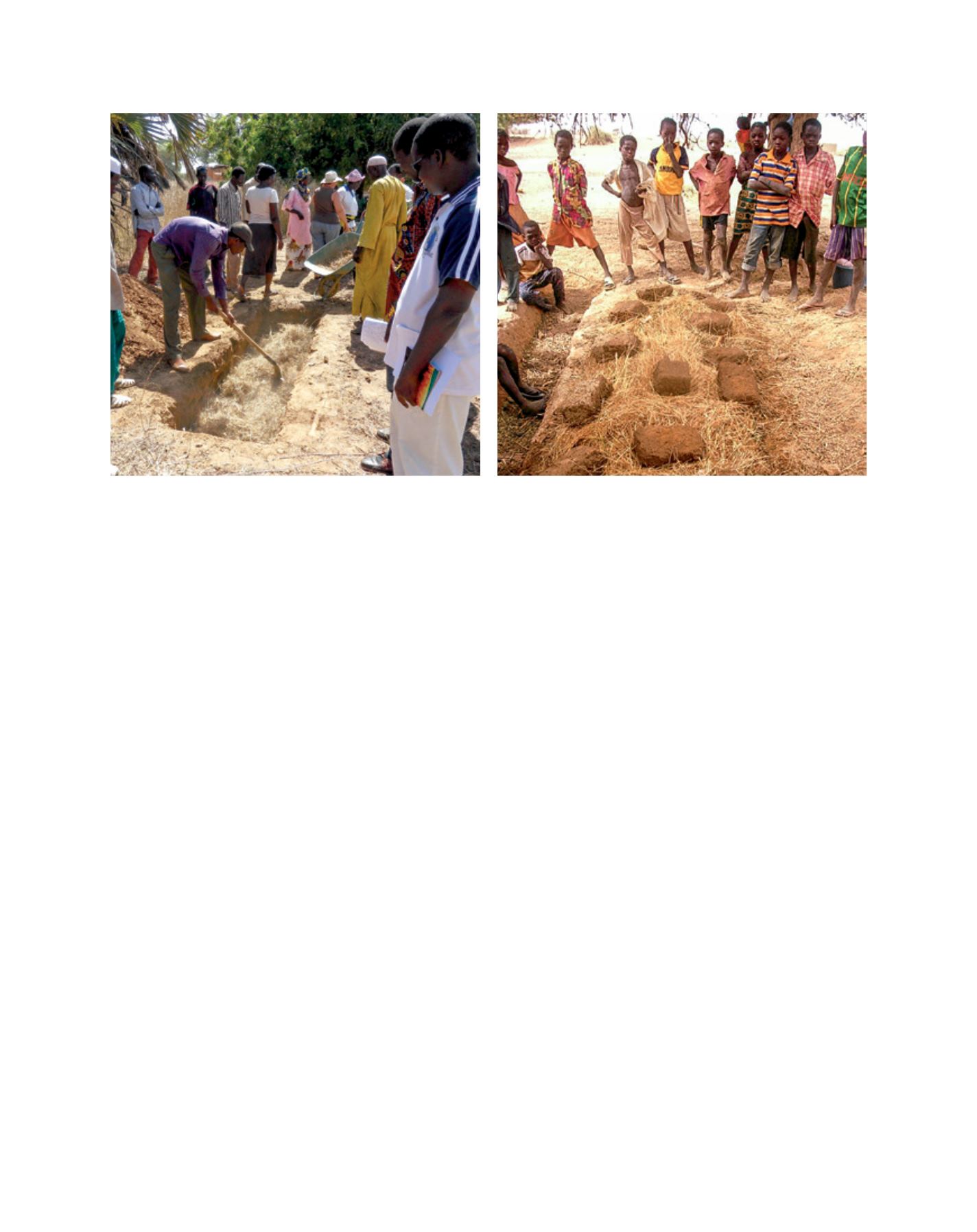

[
] 150
Pour un autre monde works with small investments for big
profits. We are a small non-governmental organization (NGO)
with a €30,000 yearly budget, but we help feed 15,000 pupils
for eight months of the year. Those pupils are able to study
better and are in better health. Girls can remain in school
longer instead of pounding sorghum.
As volunteers we pay for our own plane tickets and food,
only declaring these costs to the tax office to get a one-third
rebate on annual income taxes. The NGO rents a house in
Titao and bought its own vehicle — a three-wheeler motor-
bike — to visit the schools, meet partners and carry materials,
covering distances of approximately 5,000 km in 12 weeks.
Transferring know-how is free.
The projects include fostering 40 pupils or students and
providing materials and books, photovoltaic plates (we have
already installed 18, 10 of which were co-financed by Sol
Solidari), 40 pedal sewing machines for girls leaving school,
five mesh roll hand machines for out-of-work youth (creating
10 self-sustained jobs with profits going to the schools), and
five fuel grain mills controlled and managed by mothers. We
plan to open the first solar powered mill in November 2015.
A project begins with somebody contacting the coordina-
tor (kindly loaned by the Directeur Provincial de l’Education
Nationale et de l’Alphabétisation (DPENA) in Titao) or any
Pour un autre monde representative — phone numbers, cards
and flyers are easily passed from hand to hand. Before making
a decision about the request, we meet three or four times with
teachers (and pupils’ heads in secondary schools), parents’ and
mothers’ associations (APE/AME), the Education Inspector, local
authorities such as chiefs, elders and mayors, and environment
and agriculture directors. We report twice yearly to the DPENA.
The first group of partners wrote a ‘guide for sustainable projects’
in 2012, whichwas completed in 2014. The guide describes activi-
ties during the five years of the project, the role of the NGO and
what the teachers, pupils and parents will do (including a 20 per
cent contribution in money or work). It lists the people responsi-
ble and the materials in the school’s inventory, and explains how
controls are establishedwith the school garden copy book (written
by different pupils) and with the APE/AME bank book (as schools
soon gain money selling surplus vegetables or grain, iron mesh
rolls, charging telephones or grinding flour).
If everybody agrees, after hours of friendly discussion, news,
translations and thanks, the plan is signed and a copy is given
to the DPENA. We set up a Comité de suivi et de gestion (moni-
toring and management committee) which consists of parents
and teachers working together with the NGO as a non-voting
member. Once that is in place, the practical work begins.
Here is a typical account of how we work to make a garden
out of a ‘zipelle’ (a sterile ground haunted by djinns). Before the
first practice visit, parents have dug the first of four trenches
(3 m x 0.75 m x 0.4 m). Pupils have collected ‘rumbs bindu’
(dried cow dung) for azote, dried vegetal refuse for carbon,
little bags of ashes from the kitchen fire for potash, and dried
small poultry or fish bones for calcium and phosphorus. The
cow dung and vegetal refuse, including sorghum chaff, are
watered two days beforehand to revive the good bacteria and
prevent people from inhaling cow dung dust when breaking it
into small pieces (this causes pneumonia, as I found out).
To check soil permeability we throw water from five water-
ing cans into the bottom of the trench: if it disappears quickly
we need clay, of which there is plenty in Loroum. We then ask
volunteers to stamp the damp clay— the pupils enjoy this chance
to have their feet in water and mud with their parents’ and teach-
ers’ approval. If water remains we start some damming using the
pupils’ feet as well. Then we make a gigantic sandwich consist-
ing of 17 wheelbarrows full of damped dried plants, six to seven
wheelbarrows full of humid cow dung in small pieces, two hand-
fuls of ashes and two handfuls of pounded bones, with five or six
cans of water for each layer. This fills the trench up to knee-level.
To finish, we add plenty of dried grass in a layer 10 cm thick. If it
Trenches are layered using the natural fertilizer material and water, then dried grass is added to the top and weighed down to secure
Images: Association Pour un autre monde
L
iving
L
and
















